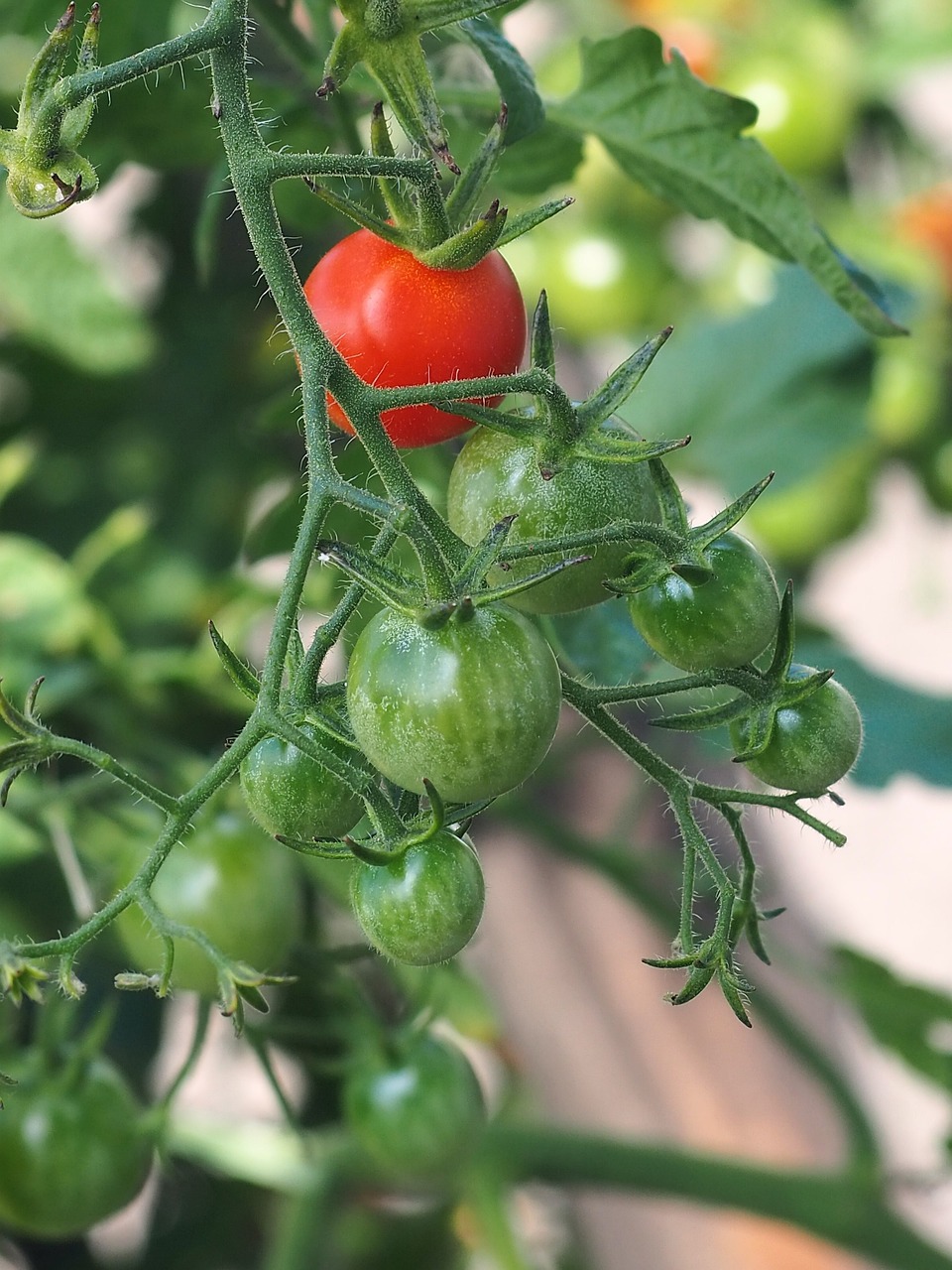For many UK gardeners, the joy of growing your own vegetables—especially staples like potatoes and tomatoes—is one of the greatest pleasures of gardening. There’s nothing quite like the satisfaction of digging up a crop of homegrown spuds or picking plump, juicy tomatoes straight off the vine. But what happens when that joy is marred by one of the most dreaded diseases to strike UK gardens? That’s right, we’re talking about blight—a nasty fungal disease that can devastate your potato and tomato plants almost overnight.
If you’ve ever watched your plants go from thriving to shriveling in what seems like the blink of an eye, you’re not alone. Blight is a common problem in the UK, particularly during warm, wet summers. But don’t despair! While blight is a formidable foe, it’s not unbeatable. In this entertaining and informative guide, we’ll dive deep into the world of blight, exploring what it is, how to prevent it, and what to do if your garden falls victim to this sneaky pest. Let’s get to it!
What Exactly Is Blight?
Before we launch into the battle plan, let’s take a closer look at what we’re dealing with. Blight, specifically late blight (Phytophthora infestans), is a fungal-like pathogen that primarily affects potatoes and tomatoes. This pesky disease is infamous for the speed with which it can infect and destroy a crop. It thrives in the cool, wet conditions that are all too common during the British summer, particularly when the temperature hovers between 10°C and 25°C and the air is humid.
Types of Blight
- Late Blight: This is the more destructive form of blight and is the one that strikes fear into the hearts of gardeners. It affects both potatoes and tomatoes, often spreading rapidly through gardens and allotments. Late blight is responsible for the infamous Irish potato famine of the 1840s.
- Early Blight: Although less common in the UK, early blight affects potatoes and tomatoes as well. It causes circular brown spots with concentric rings on the leaves and stems, but it’s not as destructive or fast-moving as late blight.
Step 1: Recognizing the Enemy – How to Identify Blight
Knowing what blight looks like is the first step to preventing it from spreading. Both potato and tomato plants will show similar symptoms when infected with blight, and early detection is crucial for minimizing damage.
Signs of Late Blight:
- On Tomato Plants:
- Dark, water-soaked spots appear on leaves, usually starting at the edges.
- These spots quickly turn brown and papery, and the leaves may curl and wither.
- The stems may develop black or brown lesions, and the plant can collapse.
- The fruit itself may develop brown, firm patches that rot as they spread.
- On Potato Plants:
- Black or brown lesions form on the leaves, often with a yellow halo.
- The stems can also become dark and mushy, leading to plant collapse.
- When you dig up the tubers, you may find them covered in brown, rotting patches that make them inedible.
Tip: If you notice any of these symptoms, act fast! Blight can spread rapidly in the right conditions, so early intervention is key.
Step 2: Preventing Blight – How to Stop It Before It Starts
Now that we know what we’re dealing with, let’s talk about prevention. Blight thrives in warm, wet conditions, so the goal is to create an environment that is as inhospitable to the disease as possible.
1. Choose Resistant Varieties
The simplest and most effective way to prevent blight is to plant varieties of potatoes and tomatoes that are resistant to the disease. Breeders have developed several varieties that can stand up to blight, reducing your chances of infection.
Blight-Resistant Potato Varieties:
- Sarpo Mira: One of the most blight-resistant potato varieties available, Sarpo Mira is a popular choice for UK gardeners who want a reliable crop without the risk of blight.
- Cara: This maincrop potato variety has moderate resistance to blight and produces good yields even in adverse conditions.
- Orla: A blight-resistant early variety, Orla can help you get a head start on the season and avoid the worst of the blight weather.
Blight-Resistant Tomato Varieties:
- Mountain Magic: Known for its resistance to blight, this cherry-sized tomato produces delicious, juicy fruit while standing up to fungal diseases.
- Crimson Crush: A robust and blight-resistant tomato variety that is well-suited to the UK climate.
- Lizzano: This compact, blight-tolerant tomato is perfect for small gardens or growing in containers.
2. Keep Your Plants Dry
Blight loves moisture, so one of the best ways to prevent it is by keeping your plants as dry as possible. This can be tricky during a British summer, but there are a few things you can do to reduce moisture around your plants.
- Water at the base: Instead of watering your plants from above, focus the water at the base of the plants to keep the foliage dry. Avoid splashing water onto the leaves, which can spread fungal spores.
- Water in the morning: Water your plants early in the day so that any moisture on the leaves can dry off before nightfall. Wet leaves overnight are a perfect breeding ground for blight.
- Space your plants: Give your plants plenty of room to allow for good air circulation. Crowded plants trap moisture and make it easier for blight to spread.
3. Practice Crop Rotation
Crop rotation is a simple but effective way to prevent the buildup of soil-borne diseases like blight. Avoid planting potatoes and tomatoes in the same spot year after year. Instead, rotate them with other crops such as beans, brassicas, or root vegetables.
Tip: A three-year crop rotation plan is ideal for keeping blight and other diseases at bay.
Step 3: Managing an Outbreak – What to Do If Blight Strikes
Despite your best efforts, sometimes blight can still make an appearance in your garden. If that happens, it’s important to act quickly to minimize the damage.
1. Remove Affected Foliage
As soon as you spot signs of blight, remove the affected leaves and stems from the plant and dispose of them. Do not compost the infected material, as this can spread the disease to other parts of your garden. Instead, bag it up and throw it away with your household waste.
Tip: Sterilize your tools between cuts to prevent the spread of the disease to other plants.
2. Harvest Potatoes Early
If blight strikes your potato plants, it’s a good idea to harvest your potatoes as early as possible to prevent the disease from spreading to the tubers. Once you’ve removed the infected foliage, leave the potatoes in the ground for a few weeks to allow their skins to toughen before digging them up.
3. Use a Fungicide
For severe outbreaks, you may need to resort to a fungicide to control the spread of blight. There are both chemical and organic fungicides available. If you prefer a more eco-friendly option, look for copper-based fungicides or products containing sulfur.
Tip: Apply fungicides before the blight takes hold for the best results. Fungicides are most effective when used as a preventative measure.
4. Contain the Spread
Blight spores are easily spread by wind and water, so take steps to contain the disease once you’ve identified it in your garden.
- Isolate infected plants: Remove infected plants and their surrounding soil to prevent the disease from spreading to nearby healthy plants.
- Avoid overhead watering: Switch to a soaker hose or drip irrigation system to keep the foliage dry and reduce the risk of spreading spores.
Step 4: Long-Term Solutions – Planning for Next Season
Once you’ve dealt with an outbreak of blight, it’s important to think about how you can prevent it from happening again next season. By making a few simple changes to your gardening practices, you can reduce the risk of blight returning.
1. Improve Soil Health
Healthy soil is the foundation of a healthy garden, and improving your soil can help reduce the risk of blight and other diseases. Adding organic matter, such as compost or well-rotted manure, can improve soil structure, drainage, and fertility.
- Mulching: Apply a layer of organic mulch around your plants to help retain moisture in the soil, reduce splashing, and suppress weeds.
2. Start Early
Blight typically strikes later in the growing season when conditions are warm and wet. By starting your potato and tomato plants early, you can harvest them before blight becomes a major issue.
- Start tomatoes indoors: Sow your tomato seeds indoors in late winter or early spring to get a head start on the season.
- Plant early varieties: Choose early-maturing potato and tomato varieties to minimize your risk of blight exposure.
3. Keep an Eye on the Forecast
Blight is often triggered by specific weather conditions, known as “blight warnings.” Keep an eye on the weather and be prepared to take preventative measures if a period of warm, wet weather is forecast.
Tip: Sign up for blight alerts from organizations like the Royal Horticultural Society (RHS) to receive warnings about high-risk weather conditions in your area.
Time to Get Growing
Blight might be one of the biggest challenges facing UK gardeners, but with a little knowledge and preparation, you can prevent it from ruining your hard work. By planting resistant varieties, keeping your plants dry, practicing crop rotation, and acting quickly at the first sign of trouble, you’ll be well-equipped to keep blight at bay and enjoy a healthy, bountiful harvest.
So, don’t let blight discourage you! Get back out there and grow those delicious tomatoes and perfect potatoes. Your garden will thank you for it.








